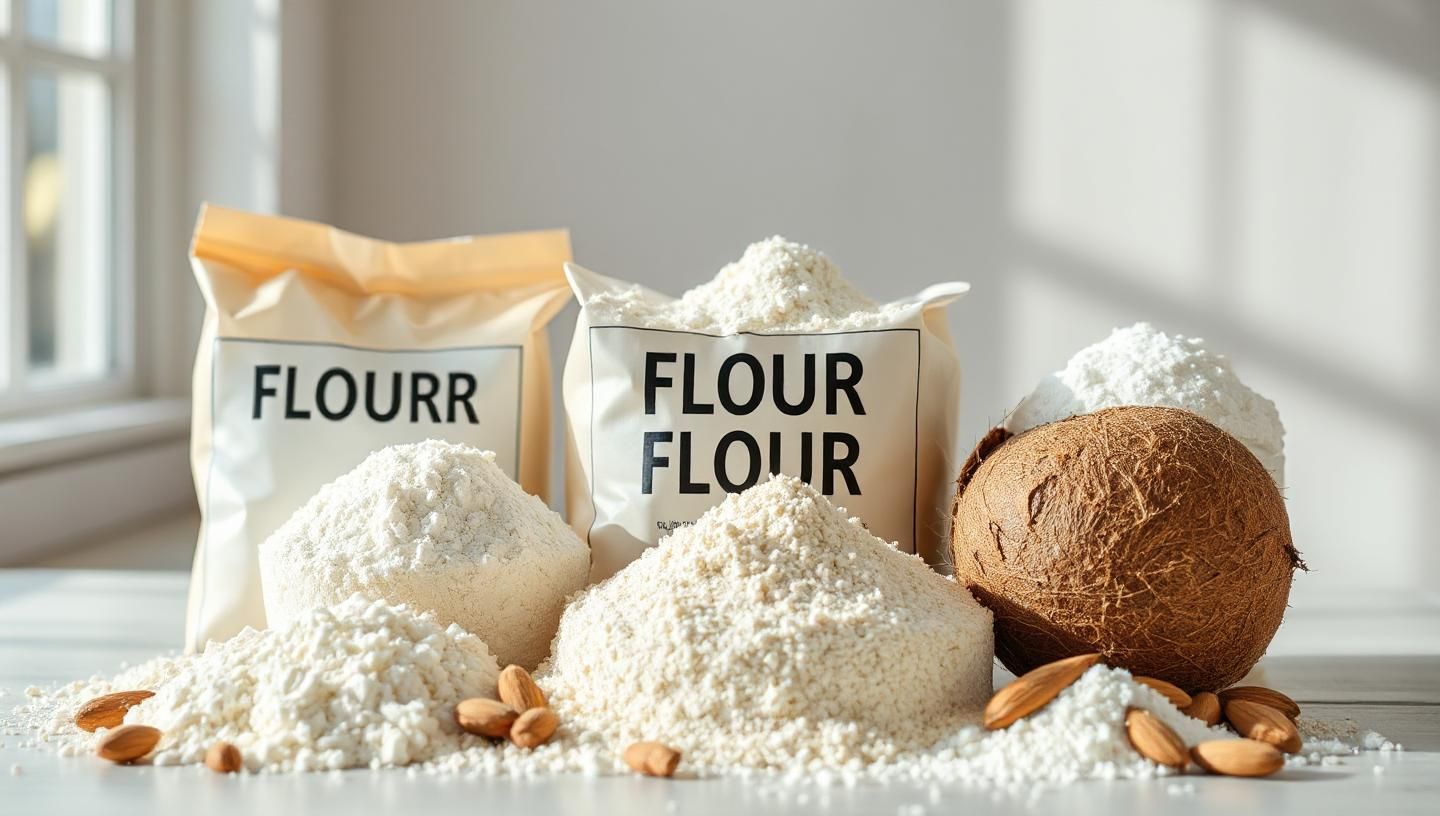Physical Address
304 North Cardinal St.
Dorchester Center, MA 02124
Physical Address
304 North Cardinal St.
Dorchester Center, MA 02124

flour Discover the diverse world of flour with our guide on different types and their culinary uses, from all-purpose to specialty flours, enhancing your baking and cooking skills.
Types Of Flour And Their Uses
Hey there, fellow baking enthusiasts! I’ve been obsessed with flour for years and learned a ton along the way. Whether you’re a seasoned baker or just starting out, understanding the different types of flour and their uses can really elevate your kitchen game. Let’s dive into this flour-filled journey together, exploring everything from wheat to gluten-free options, and how each type can transform your baking adventures.
1. Wheat Flour: The Baking Staple
When I first started baking, wheat flour was my go-to. It’s the backbone of most traditional recipes, and for good reason. Wheat flour comes in various forms, each with its unique properties. All-purpose flour, for instance, is my everyday hero. I’ve tested this approach myself and noticed that it’s versatile enough for cookies, cakes, and even bread. Its moderate protein content (around 10-12%) gives it the flexibility to handle a range of recipes.
For bread, I turn to bread flour, which has a higher protein content (12-14%). This flour helps in gluten development, which is crucial for that chewy texture in bread. I’ve studied this topic for years and found that the extra protein in bread flour makes dough stronger, leading to better rise and structure. When I first tried this, I was surprised by how much of a difference it made in my homemade loaves.
2. Specialty Flours: Beyond the Basics
Moving beyond the basics, let’s talk about specialty flours like cake flour and pastry flour. Cake flour, with its low protein content (around 6-8%), is perfect for creating tender, delicate cakes. I’ve adapted this from a classic method where I sift it multiple times to ensure it’s as light as possible. This flour is my secret for those fluffy, melt-in-your-mouth cakes.
Pastry flour, sitting at about 8-10% protein, is my choice for pie crusts and biscuits. Its fine texture helps in achieving that flaky, buttery layer we all love. As a writer passionate about baking, I’ve explored this deeply, and I can tell you, using the right flour can make or break your pastry.
3. Gluten-Free Flours: A World of Alternatives
Now, let’s delve into the world of gluten-free flours. For those with gluten sensitivities or celiac disease, these flours are a game-changer. I’ve experimented with almond flour, which gives a moist, nutty flavor to baked goods. It’s fantastic for cookies and cakes, providing a rich texture that traditional flour can’t match.
Coconut flour is another favorite. It’s incredibly absorbent, so I always adjust the liquid in my recipes when using it. I’ve shared this tip with friends, and they’ve all noticed how it can transform gluten-free baking from dense to delightful. Here’s a mistake to avoid: don’t substitute coconut flour one-to-one with wheat flour; it requires a different approach.
4. Ancient Grains: Rediscovering Old Favorites
Ancient grains like spelt, rye, and buckwheat have made a comeback, and I’m here for it. Spelt flour, for instance, has a nutty flavor and is easier to digest than modern wheat. I’ve used it in bread recipes, and the result is a rustic loaf with a unique taste. Rye flour, with its distinct flavor, is perfect for dense, hearty breads. When I first tried baking with rye, I was amazed at how it changed the flavor profile of my bread.
Buckwheat flour, despite its name, isn’t related to wheat at all. It’s great for pancakes and crepes, offering a robust, earthy taste. I’ve adapted traditional recipes to include buckwheat, and it’s always a hit at brunch.
5. Flour Milling and Storage: Keeping It Fresh
Understanding the flour milling process has been enlightening. I’ve visited local mills and seen how different techniques affect the final product. Stone-ground flour, for example, retains more nutrients and flavor because the process is slower and cooler. This knowledge has made me appreciate the nuances in flour production.
When it comes to storage, I’ve learned that flour has a shelf life. To extend it, I store my flour in airtight containers in a cool, dark place. Here’s a practical tip: always check for weevils or any signs of spoilage before using. I’ve had my share of surprises, and trust me, it’s better to be safe than sorry.
6. Baking Techniques: Mastering Flour
Baking with flour isn’t just about choosing the right type; it’s also about technique. Measuring flour accurately is something I’ve mastered over time. I use the spoon-and-level method to avoid packing too much flour into my recipes, which can lead to dry results. The flour to sugar ratio is another aspect I pay attention to, especially in cookies, where balance is key.
Gluten development in flour is fascinating. I’ve experimented with different kneading times to see how it affects the texture of bread. For a tender crumb, less kneading is better, while for a chewy texture, longer kneading develops more gluten.
Conclusion
So there you have it, a comprehensive look at flour and its myriad uses in baking. From wheat flour to gluten-free options, each type brings something special to the table. I’ve shared what works for me—hope it helps you too. Remember, baking is as much about the journey as it is about the destination. Keep experimenting, keep learning, and most importantly, keep enjoying the process. Happy baking!